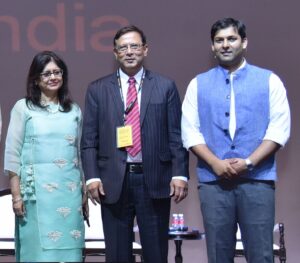
The metaverse, once confined to the realms of science fiction, is now becoming a digital reality. A vast, interconnected virtual space, the metaverse is where people from across the globe can interact, create, and experience a new dimension of digital life. With technology evolving at an unprecedented pace, businesses are eager to explore the metaverse as a new frontier for marketing and advertising.
In this article, we will delve into the concept of marketing in the metaverse, focusing on the emerging trend of virtual reality advertising.
The Metaverse: A new marketing frontier
The metaverse is a collective virtual shared space, that merges the physical and digital worlds. It’s an expansive universe composed of interconnected virtual environments, facilitated by advanced technologies like virtual reality (VR) and augmented reality (AR).
Mark Zuckerberg, the CEO of Meta Platforms, Inc. (formerly Facebook), has declared his vision to turn his company into a metaverse powerhouse. This move highlights the increasing importance of the metaverse in the tech and business world.
Virtual reality advertising: A new paradigm
Virtual reality advertising represents a groundbreaking shift in the way businesses connect with consumers. Instead of conventional advertising methods that rely on banners, videos, or pop-ups, VR advertising immerses users in a fully interactive and immersive experience. These ads enable consumers to engage with products or services in a three-dimensional space. For instance, a VR headset might transport users into a virtual showroom, where they can examine products and even make purchases.
The benefits of VR advertising
Immersive brand experiences
VR allows brands to create immersive environments where consumers can interact with products and services, forging deeper connections and memorable experiences.
Enhanced engagement
Virtual reality advertising captivates users’ attention like never before. The immersive nature of VR makes it difficult for users to ignore or skip ads.
Precise targeting
VR platforms can collect user data, enabling advertisers to target their campaigns with precision. This ensures that ads reach the most relevant audience.
Creative freedom
VR offers limitless possibilities for creativity. Advertisers can craft unique, engaging campaigns that stand out in the crowded digital landscape.
Use cases for VR advertising
Real Estate
Virtual property tours allow potential buyers to explore homes or apartments in a highly immersive manner, giving them a feel for the space without visiting physically.
Gaming
In-game advertising is a growing trend, with brands incorporating their products seamlessly into virtual gaming worlds.
Tourism
VR allows travel agencies to offer virtual destination experiences, enticing travellers with immersive previews of their dream vacations.
Education
Educational institutions are using VR to create engaging and interactive learning experiences, with the potential for sponsored educational content.
Challenges and considerations
While VR advertising holds immense promise, it also faces challenges. The cost of VR equipment remains a barrier for many users. Privacy concerns related to data collection in virtual spaces need careful attention. Additionally, creating high-quality VR content demands significant resources and expertise.
Conclusion
As the metaverse continues to evolve, virtual reality advertising is set to revolutionise the marketing landscape. By providing immersive brand experiences, enhanced engagement, and precise targeting, VR advertising offers a compelling way for businesses to connect with their audience. While challenges exist, the potential rewards make it a frontier worth exploring. In the metaverse, the future of marketing is limited only by our imagination and creativity






![Read more about the article [Product Roadmap] With a presence in 200 cities, how Nivesh is using tech to win tier II and III India](https://blog.digitalsevaa.com/wp-content/uploads/2022/01/ProductRoadmap-1641307360381-300x150.jpg)



